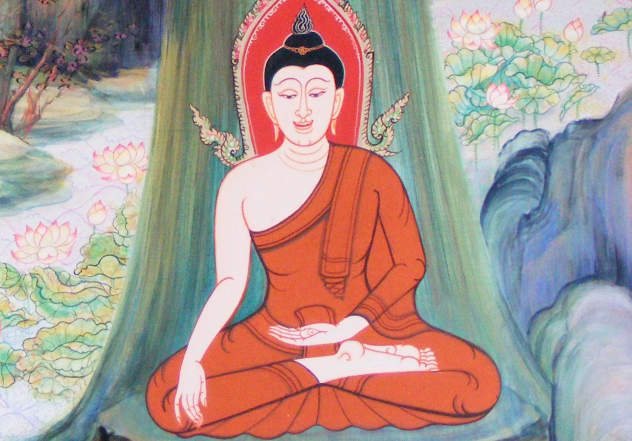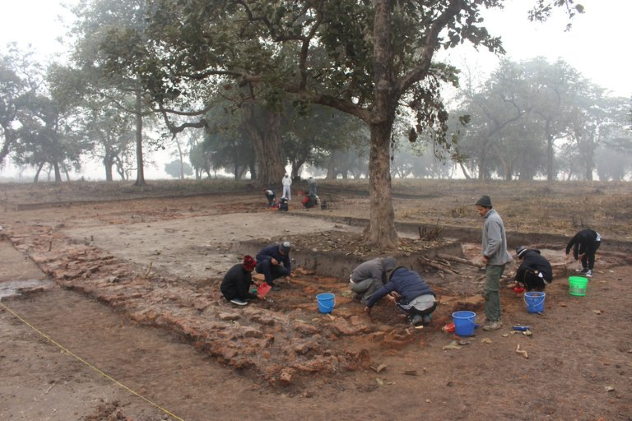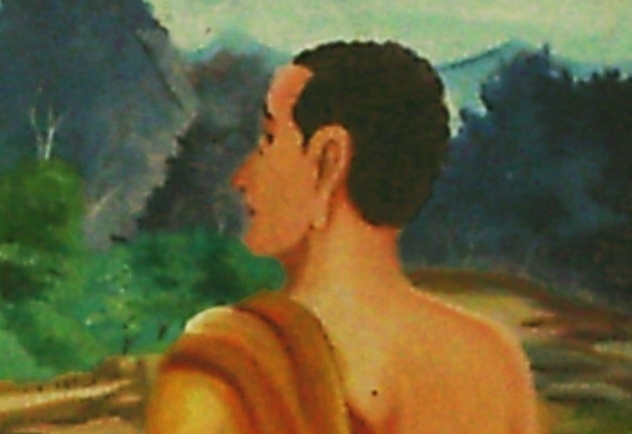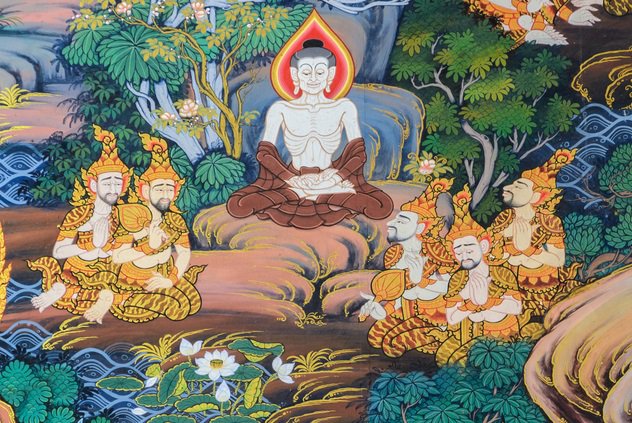(单词翻译:单击)
His legend is timeless: Siddhartha Gautama, the prince of a small kingdom at the foot of the Himalayas, is born into a world of luxury. A close encounter with human suffering shakes him. He leaves his family in search for answers and becomes homeless. After years of searching, he attains enlightenment, becomes the Buddha, and sets in motion a new religion. This list goes beyond the legend of the Buddha and presents ten interesting facts linked to this important historical figure.
佛祖如来的故事一直为人所传诵。传说,悉达多·乔答摩生于皇家,是喜马拉雅山脚下一个小国的王子。悉达多年轻时就痛感人世生、老、病、死各种苦恼,于是他出家修行。多年后,他证悟到真理,建立了一个新的宗教,成为了如来佛祖。不过,我们今天要说的是有关如来佛祖的10个趣闻。
10 Not A Religious Leader
10.并非宗教领袖

This is arguably one of the most ironic facts surrounding the life of the Buddha: The so-called “founder” of Buddhism never claimed to be founding a religion at all. There isn’t a single line of reliable historical data expressing the notion that the Buddha saw himself as a religious leader or that he consciously decided to lay the foundations of a new religious movement. It would be more accurate to say that the Buddha considered himself a teacher who rejected the ways of traditional Hindu religious orthodoxy and offered an alternative path.
这可能极具讽刺:“佛教创始人”如来佛祖从未声称自己开创了一个教派。并没有可靠的史实来表明如来佛祖认为自己是一个宗教领袖,或者他有意开展新宗教运动。更准确地说,如来佛祖只是觉得自己是一个挑战传统印度教,开辟新教义的老师。
Rather than leading a new religion, the Buddha led a sect of wandering homeless ascetics, one of many such sects that existed at that time in India. It was only after his death that the community he founded gradually turned into a religious-like movement.
与其说如来佛祖在领导一个新的宗教,不如说如来佛祖是出家修行的倡导者,当时印度这样的团体并不少。不过在他死后,他创立的团体逐渐变得宗教化。
9 Not A Prince
9.并非王子

The many legends of the Buddha present him as a prince, the son of King Suddhodana Gautama. However, there is no historical basis for believing that the Buddha was a prince, since his father couldn’t have been an actual king. It’s believed that the Buddha’s father was actually a regional leader, similar to a tribe’s chief.
佛陀的许多传说都说他是一位王子——净饭王的儿子。然而,没有史实证明如来佛祖是一位王子,因为他父亲并不是国王,只是一个类似部落首领的地区领导人。
The social organization in which the Buddha lived resembled a republican system as opposed to a monarchy. Regular meetings were held between the members of the most influential families. The family of the Buddha was one of the leading families within this political system.
如来佛祖所生活的社会组织类似于反君主制的共和制部落,由最具权势的家族之间定期举行会议。如来佛祖家族是这个政治体系中的主要家族之一。
8 Controversy Over His Hometown
8.家乡的争议

Buddhist sources mention the city of Kapilavastu as the hometown of the Buddha, where he lived until the age of 29. The site was identified in present-day Tilaurakot, in the Terai region of Southern Nepal, not far from the Indian-Nepalese border.
佛教人士认为迦毗罗卫市是佛陀的故乡,他在那里生活到29岁。现今尼泊尔南部离边境不远的寺井地区——提罗拉科特可能就是古城旧址。
When archaeologists began to study the site, the material they found did not date to the time of the city. Kapilavastu is supposed to have been founded a century or more before the birth of the Buddha, but nothing at the site suggested a date that early. As the controversy kicked in, another version was put forth—that Kapilavastu is actually located in Northern India and that the hometown of the Buddha is an earlier phase of occupation of the Piprahwa village.
考古学家着手研究时,他们发现根本查不到该城市的建立时间。迦毗罗卫国应该在如来佛祖诞生的一个多世纪前就已经存在了,但并未在现场找到任何依据。正当争议不休,另一个版本被提出,迦毗罗卫国实际上是位于印度北部,佛陀的故乡是早期的庇浦拉瓦村。
The dispute is still ongoing, and the exact location of the Buddha’s hometown remains speculative. Further compounding the issue are reports from the ancient Chinese pilgrims Faxian and Xuanzang, who traveled around the area in the fourth and seventh centuries AD, respectively. Both disagree on how far west of Lumbini (the birthplace of the Buddha) Kapilavastu was located.
这一争议仍在进行,佛陀的故乡依然是未解之谜。古代朝圣者法显和玄奘的史料显示西蓝毗尼(佛祖的诞生地)位于迦毗罗卫国。
7 Uncertain Chronology
7.出生时间不详

The traditional date for the birth of the Buddha is somewhere around 560 BC. This date is based on the Indian Chronology, which has been rejected by modern scholars on the basis that in is inconsistent with an important “fixed point” in said chronology, namely the reign of Ashoka, one of India’s most renowned rulers, who ruled from 268 to 232 BC. When scholars came to know the exact dates for Ashoka, it turned out that they were miscalculated in the traditional chronology.
一般认为,佛陀诞生的时间是印度年表公元前560年左右。现今的学者却认为印度年表中记载的阿育王统治时期不正确。因为据记载阿育王(印度最著名的统治者)统治期是公元前268到232年。这就是说,以前用印度年表推算出的佛陀诞生日也不准确。
Most scholars today support a date that is inferred from early Buddhist sources, which claim that the Buddha died 100 years before the reign of Ashoka. All sources agree that the Buddha died at the age of 80, which would place his birth somewhere around 450 BC.
大多数学者推断出阿育王是在佛陀去世后100年即位的。佛陀去世时享年80岁,那么,他的出生时间就在公元前450年左右。
There is a good historical reason to support this date: Early Buddhists were interested in pushing the dates of the Buddha further back in time. An early date meant more credibility over some rival religious schools that supported their authority by claiming to have originated a long time ago. Going against the natural tendency of early Buddhists and claiming a later date means that the source in question is more credible from a historical standpoint.
这一推断是比较准确的,早期的佛教徒喜欢把佛陀出生时间推前。时间越早越能说明佛教的传统由来已久。那么佛陀的真实出生时间应该是相对晚一点的。
6 Humble Beginning
6.起步维艰

From what we can tell based on archaeological and historical records, the early stages of the sect founded by the Buddha did not have any considerable success in terms of gaining followers. After the Buddha died, the movement he founded was a relatively minor tradition in India. The scarcity of written documents, inscriptions, and archaeological evidence from that time suggests a humble beginning.
从考古和历史记录判断,由佛祖创立的教派在早期阶段没有取得成功。佛祖死后,佛教在印度还是一个相对次要的派系。从当时的书面文件、铭文和考古学的证据表明,佛教早期并不兴盛。
By the third century BC, however, this picture changed completely. Ashoka turned Buddhism into the state religion of India. He encouraged a social and political climate for the acceptance of Buddhist ideas, sponsored Buddhist missionary activity, and involved many Buddhist monks in the political decision-making processes of his government. Between the death of the Buddha and the time of Ashoka, Buddhist material evidence is scarce; after the time of Ashoka, it is abundant.
然而,到了公元前3世纪,这种局面完全改变了。阿育王把佛教奉为印度的国教。他倡导佛教,支持佛教传教活动,并让许多僧人身居机关要职。佛陀死后到阿育王即位期间的佛教资料稀少;阿育王以后,佛教的资料就十分丰富了。


